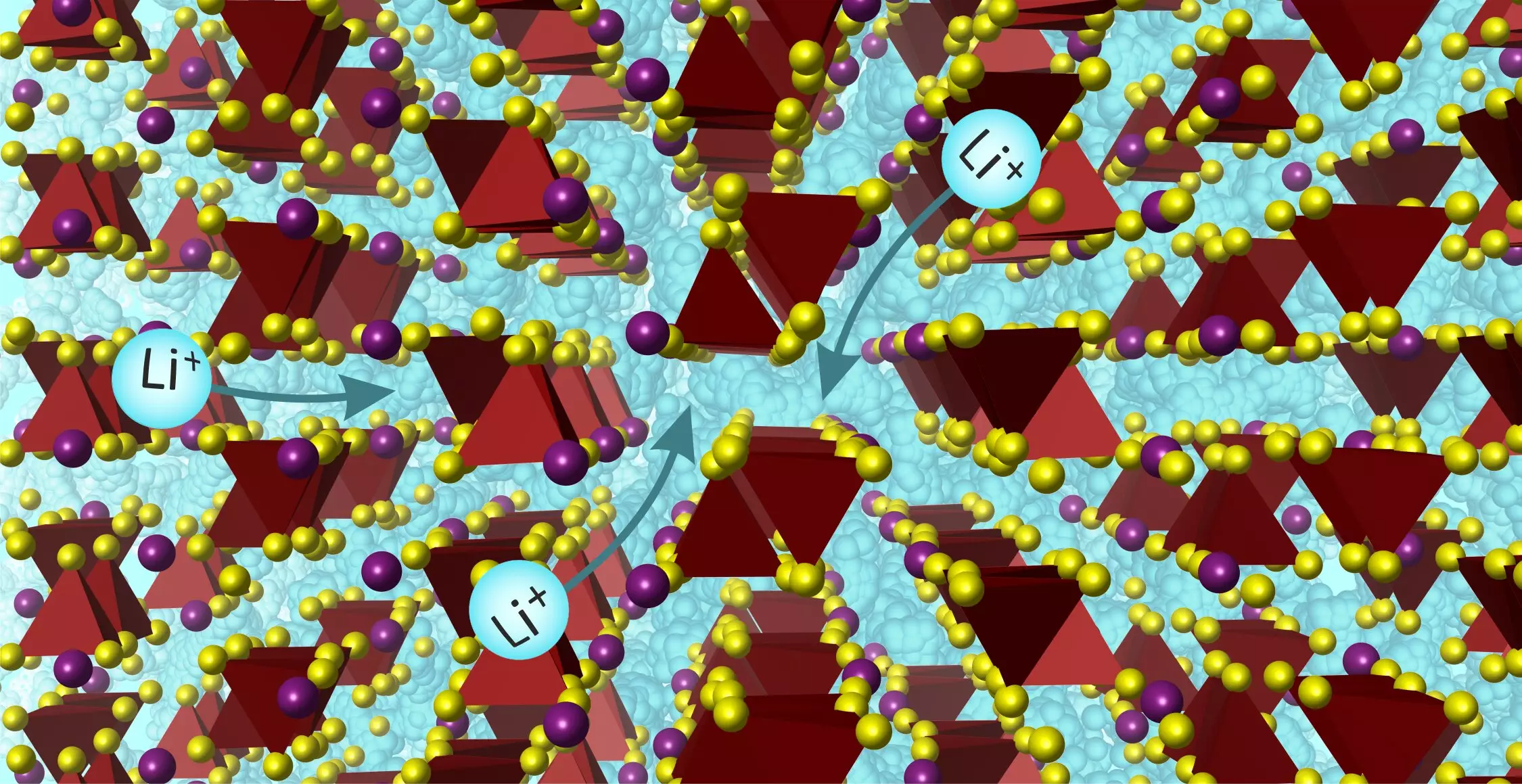Revolutionizing battery technology is one of the most significant challenges in materials science. As the world transitions towards sustainable energy sources and the urgency to achieve Net Zero increases, the search for new materials becomes crucial. In an astonishing breakthrough, researchers at the University of Liverpool have discovered a solid material that exhibits rapid lithium ion conductivity. This discovery opens up possibilities for improving the safety and energy capacity of rechargeable batteries powering electric vehicles and electronic devices.
The interdisciplinary research team at the University of Liverpool utilized a groundbreaking scientific approach to design and synthesize this new material. Their paper, titled “Superionic lithium transport via multiple coordination environments defined by two anion packing,” published in Science, unveils the remarkable properties of this solid material. The team successfully determined its structure and demonstrated its potential in a battery cell.
One of the distinguishing features of this material is its high lithium ion conductivity. Traditionally, liquid electrolytes have been utilized in lithium-ion batteries. However, the new material offers a promising alternative by providing sufficiently high lithium ion conductivity to replace these liquid electrolytes. This advancement not only improves the safety of the batteries but also enhances their energy capacity.
The structure of this newly discovered material challenges previous conceptions of high-performance solid-state electrolytes. Unlike the limited number of solids with a narrow range of ionic environments, this material exhibits a multitude of different environments for mobile ions. Surprisingly, it is the solids with diverse ionic environments that perform exceptionally well. This discovery significantly expands the chemical space available for further exploration and paves the way for future discoveries.
The use of artificial intelligence (AI) tools in materials discovery has gained significant attention in recent years. However, this research showcases the importance of experts collaborating with AI to tackle the complex problem of real-world materials discovery. Rather than relying solely on AI tools to generate materials similar to known ones, the researchers integrated AI and physics-based calculations to support the decisions made by chemistry experts at the University of Liverpool.
The newly discovered material not only serves as a breakthrough on its own but also provides a platform for further optimization and enhancement. By leveraging the understanding gained through this study, researchers can explore ways to improve the properties of the material itself and identify other materials with similar characteristics. This disruptive design approach revolutionizes the discovery of high-performance materials dependent on rapid ion motion in solids.
The successful discovery of this new material was the result of a collaborative effort between various research institutes and departments at the University of Liverpool. Researchers from the Department of Chemistry, Materials Innovation Factory, Leverhulme Research Center for Functional Materials Design, Stephenson Institute for Renewable Energy, Albert Crewe Center, and School of Engineering joined forces to achieve this remarkable breakthrough.
Looking ahead, this discovery sets a solid foundation for future advancements in battery technology. By harnessing the potential of new materials, the world moves closer to achieving Net Zero and creating a sustainable future. The fusion of interdisciplinary research, computational tools, and experts’ knowledge catapults the field of materials science into a new era of possibility.
The design and discovery of new materials that address global priorities, such as achieving Net Zero, are paramount in materials science. The University of Liverpool’s research team’s groundbreaking discovery of a solid material with rapid lithium ion conductivity marks a significant breakthrough in battery technology. By replacing liquid electrolytes, this material enhances the safety and energy capacity of rechargeable batteries. The structure of the material challenges preconceived notions of high-performance solid-state electrolytes, broadening the chemical space for future discoveries. The integration of AI tools and expert knowledge showcases the power of collaborative efforts in materials discovery. Exciting possibilities lie ahead as researchers optimize and enhance the properties of this material and explore other high-performance materials based on the newfound understanding. This monumental achievement drives us closer to a sustainable future.



Leave a Reply